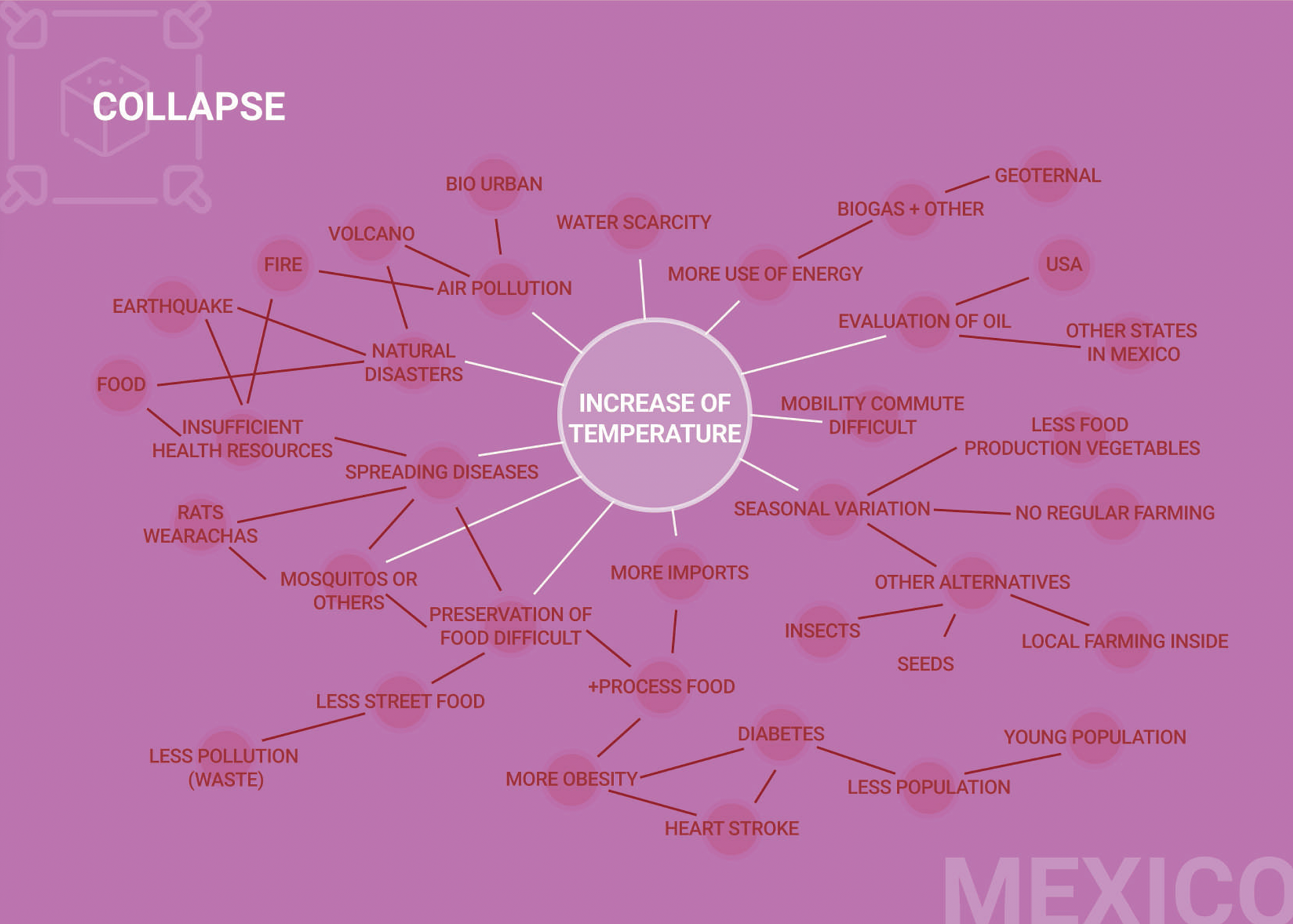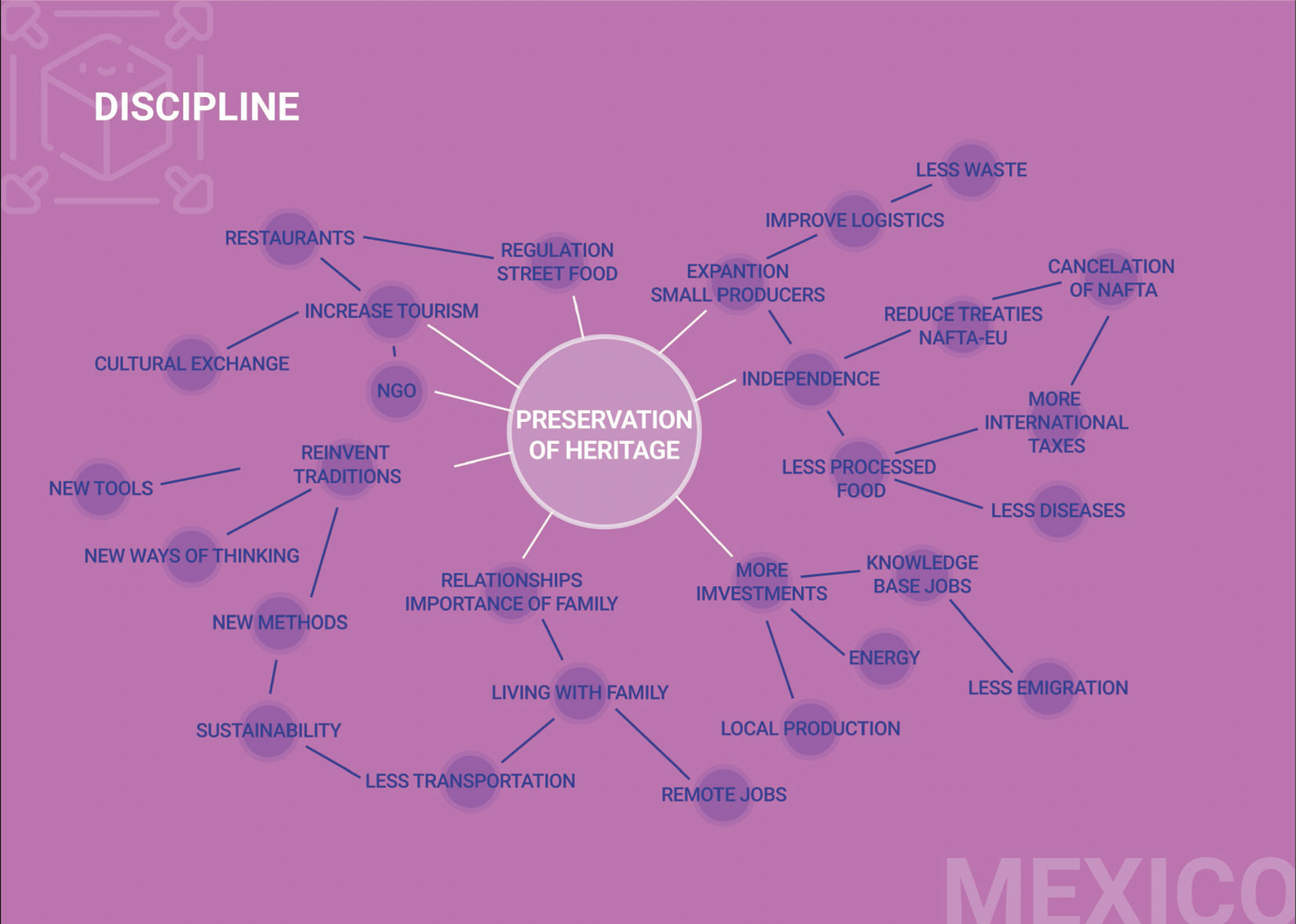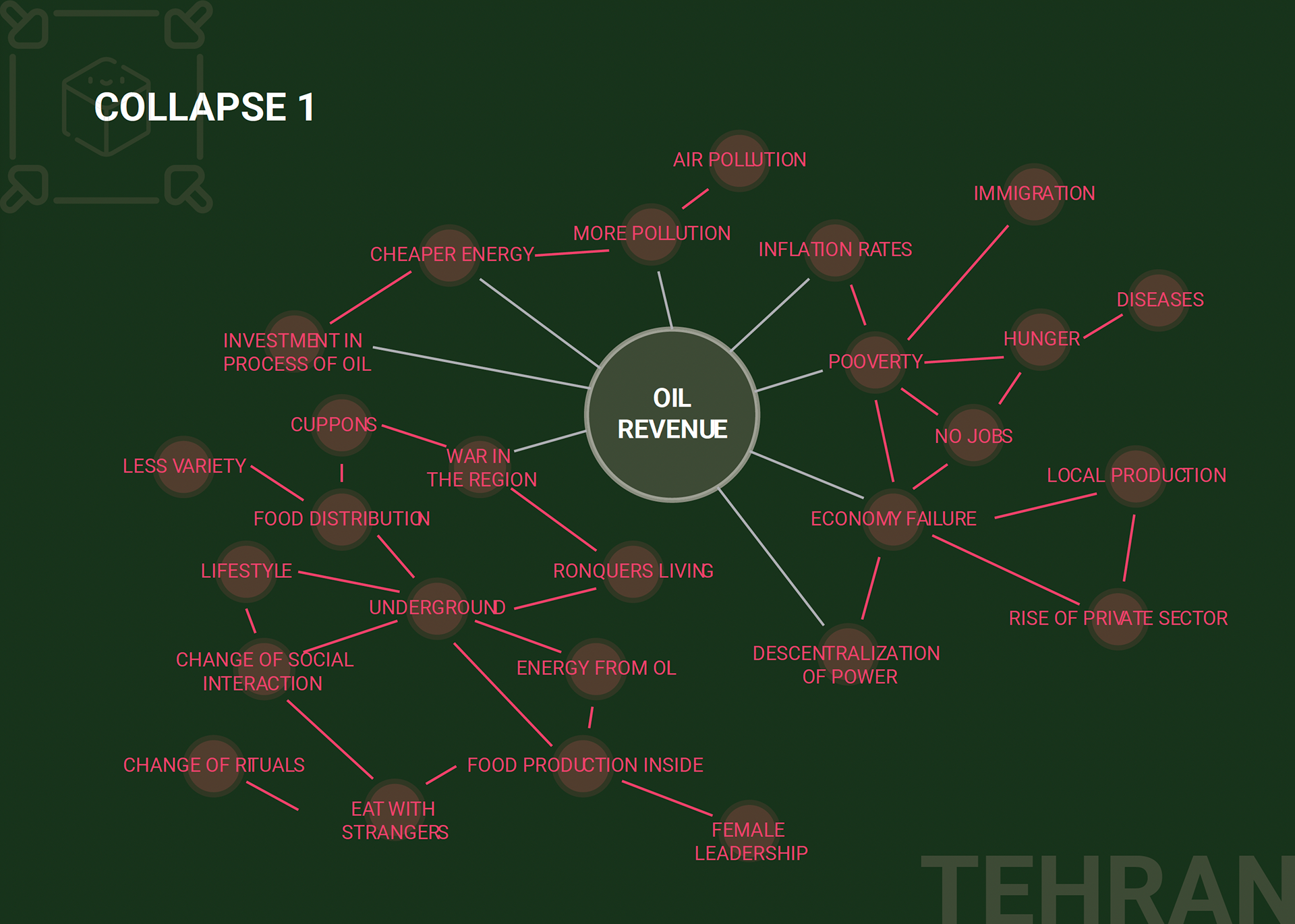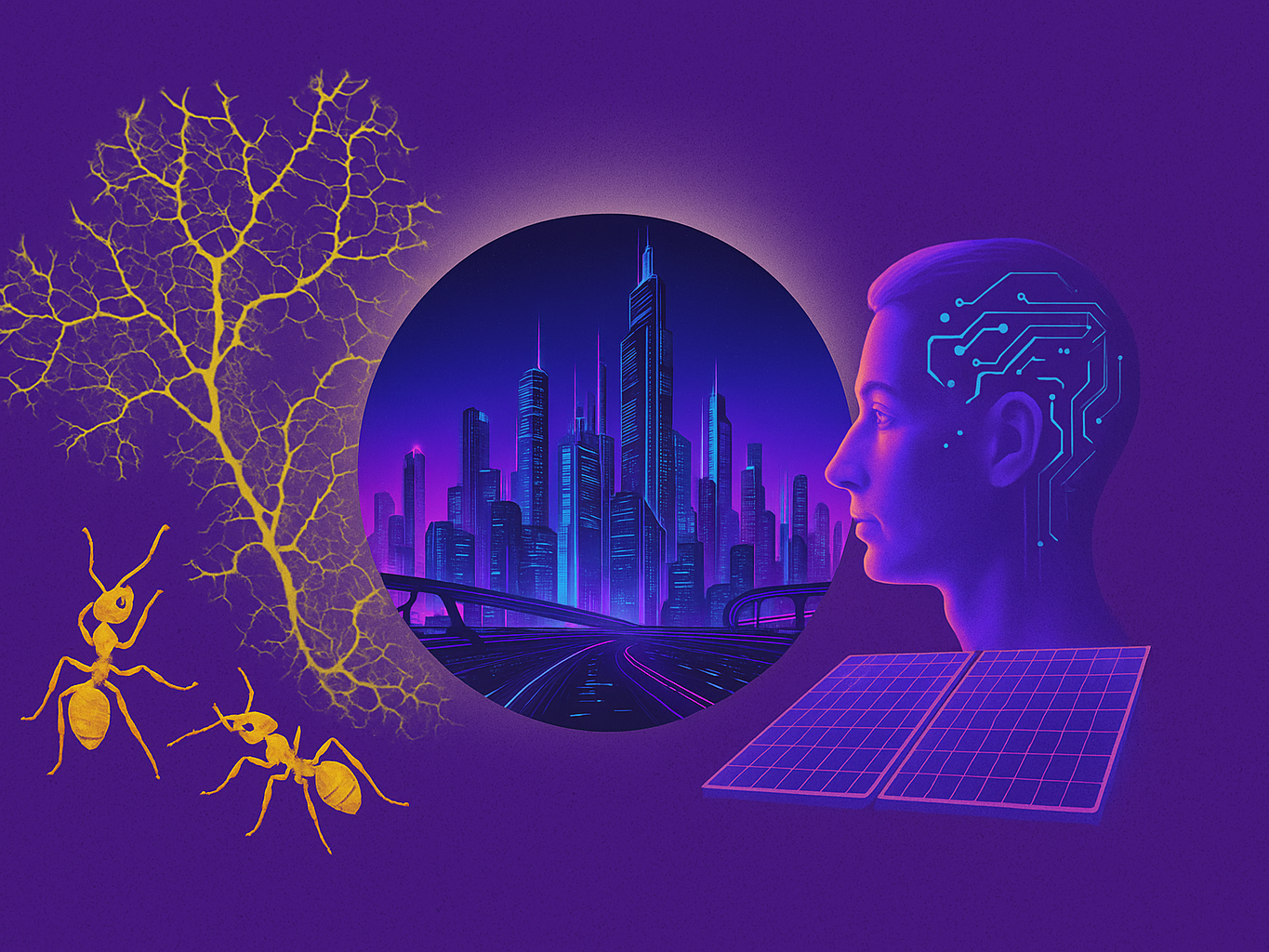Project title:
Eatween – Reimagining eating in Tehran 2035 through foresight, ritual, and speculative design
What if FOOD SCARCITY could bring people together and create SOLIDARITY?
Duration:
6 months
My Role:
Foresight research, scenario development, ritual design, concept prototyping
Process
Process At-a-glance:
“Homes for Uncertain Times – Eating & Cooking” is a Semester-long, graduate design-research studio (Politecnico di Milano, 2019-20). Its goal was to imagine how people in 2035 will live if climate action continues to lag.
We explored how people might eat in 2035 by using Mexico City and Tehran as testbeds, combining local interviews and a full STEEP scan. After mapping signals and benchmarking four food innovations, we developed five future scenarios. We focused on In Desert Womb, a drought-driven Tehran in 2035, and unpacked its ripple effects using Futures Wheels and one-day diaries. To make it tangible, we created Divism, a fictional cult born from scarcity, and designed Eatween, its central ritual: a shared dinner using objects that force mutual reliance. In two pilot runs, guests shifted from hoarding to sharing, proving that rituals can rehearse resilience.
Step 1: Collect signals and voices
Over six weeks the team logged ≈120 signals. Examples:
# Half the Mexico-City workforce is informal
# Iran ranks 4th on the global water-stress index and is set for a 35 % drop in rainfall
# NAFTA / USMCA renegotiation introduces tariff uncertainty for Mexican food imports
# Micro-algae towers that convert CO₂ to oxygen and biomass are already installed in Puebla
Step 2: Interviews
4 semi-structured interviews added ground truth, among them hydroponic-farm founder Juan Gabriel Succar on breaking long-haul supply chains.
Step 3: STEEP mapping
Each signal was placed inside Joseph Voros’ Futures Cone, tagged Possible, Plausible or Probable, then assigned to one of the five STEEP lenses. The colour-coded matrices that now headline the portfolio are direct exports of this stage; pink represents Mexico, green represents Tehran.
Step 4: Causal expansion with Futures Wheels
Two high-impact drivers per city were exploded into first, second and third-order consequences. For Tehran the hub “water scarcity” radiated to coupon diets, black-market distribution and ultimately civil protest. A parallel wheel for Mexico tested a sudden NAFTA rupture using the agreement’s 2020 renegotiation as the trigger.
Two high-impact drivers per city were exploded into first, second and third-order consequences. For Tehran the hub “water scarcity” radiated to coupon diets, black-market distribution and ultimately civil protest. A parallel wheel for Mexico tested a sudden NAFTA rupture using the agreement’s 2020 renegotiation as the trigger.




Step 5: Scenarios
Consequences from the wheels were sorted with the “Four Arcs” taxonomy (Grow, Collapse, Discipline, Transform). The material naturally formed five stories:
High(er) Hopes grows out of market protectionism; Mexico achieves food sovereignty and revives native crops.
Breath Take(n) disciplines daily life as lethal smog forces insect-protein staples in sealed apartments.
Boom, Together We Survive collapses into bunker kitchens where bread waste ferments into beer.
Capital Change transforms Tehran after a governmental relocation sparks rooftop farming and personalised nutrition.
Step 6: Story-making
Each scenario was translated into a one-day diary. Characters such as Laura, a Mexico-City courier who checks real-time air-quality feeds before cooking cricket tortillas, turn systemic forces into relatable moments.
Each scenario was translated into a one-day diary. Characters such as Laura, a Mexico-City courier who checks real-time air-quality feeds before cooking cricket tortillas, turn systemic forces into relatable moments.
Step 7: Inventing a micro-cult to make scarcity communal
Of the futures our research generated, In Desert Womb carried the sharpest tension: Tehran in 2035, bone-dry aquifers, water valued like currency, and food culture reduced to tins and tablets. Because the scenario already revolved around scarcity and ritual, it offered the richest soil for a social experiment in shared self-restraint.
We framed the pilot experience as Divism, a pop-up belief system that borrows names from ancient Persian Deev spirits and recasts them as moral guides for drought living. Deevs are creatures who do everything the opposite.
The temple of Deev
Step 8: Tangibilisation
Tangibilisation in this project meant transforming abstract future scenarios into physical artefacts, creating ritual objects and totems that embodied scarcity, interdependence, and shared control. Designed as speculative tools, these pieces such as Eatween’s head-linked sticks or shared glass vessels did more than represent ideas. They actively staged new behaviours, prompting participants to eat more slowly, depend on others, and navigate constraint. Each object turned the act of dining into a performance that rehearsed resilience and collective adaptation.
Tangibilisation in this project meant transforming abstract future scenarios into physical artefacts, creating ritual objects and totems that embodied scarcity, interdependence, and shared control. Designed as speculative tools, these pieces such as Eatween’s head-linked sticks or shared glass vessels did more than represent ideas. They actively staged new behaviours, prompting participants to eat more slowly, depend on others, and navigate constraint. Each object turned the act of dining into a performance that rehearsed resilience and collective adaptation.
The Totems each inspired by one of the Ancient Iranian Deevs
Step 9: Show
The final exhibition was held in COMBO Milano from the 20th to 26th of January 2020. In addition this projectwas presented in two other venues including:
- Design week Milano Fuorisalone, as the diffusion of the different of Milan's Salone Internazionale del Mobile. The following link will send you to the featured short film in the Fuorisalone website.
- The project was also present in the West Bund Art Center in Shanghai last winter. Part of the "Design for FutureDesign Education" exhibition hosted by FutureLab.

